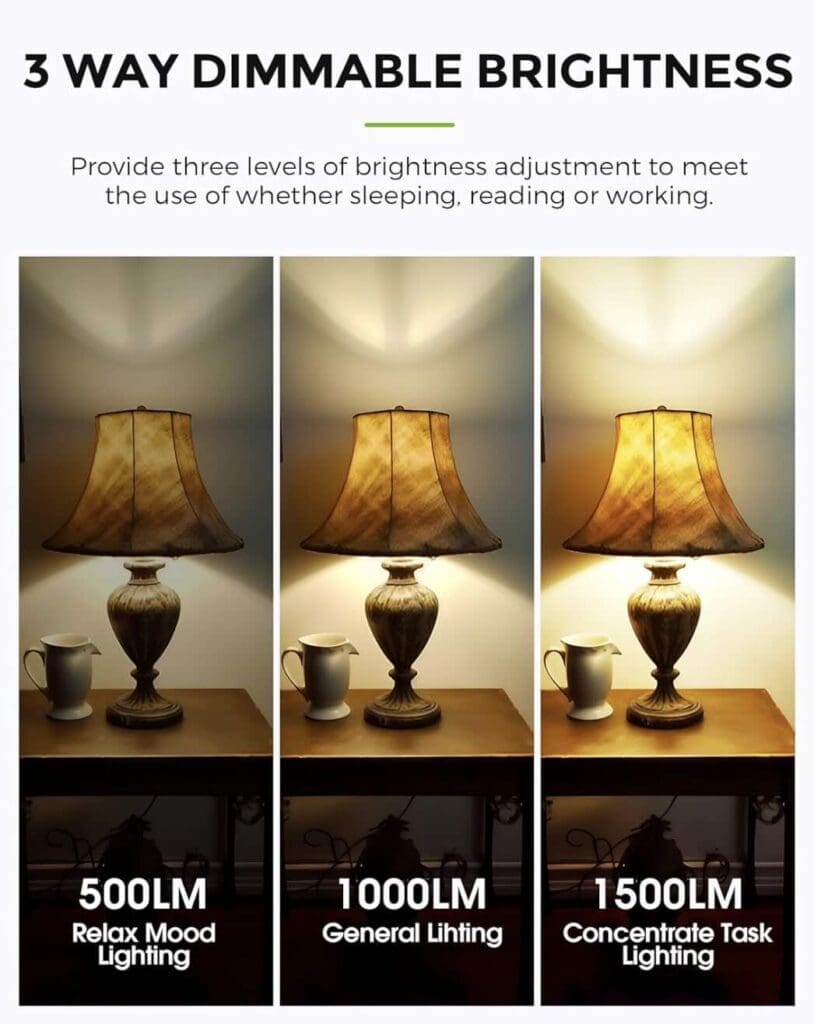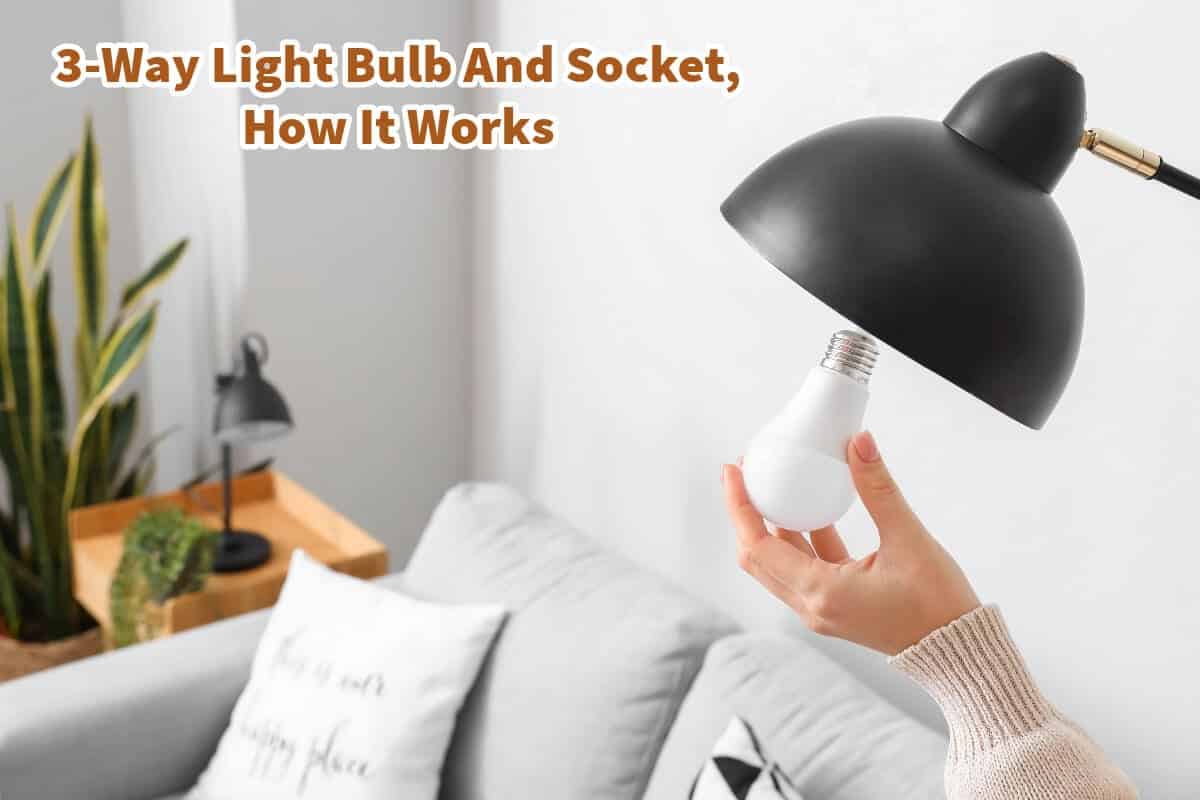When many people are looking at a light bulb, they may want to use a 3-way light bulb. When using a 3-way light bulb, it is important to understand how it works,
A 3-way bulb and socket could be your ideal solution to alter a room’s atmosphere. Commonly found in lamps placed beside beds, on floors, or desks, this setup offers the flexibility of choosing from three different light intensities, making it versatile for various tasks.
Table of Contents
- The Intricacies Of 3-Way Light Bulbs And Sockets: How They Work Together
- How Do 3-Way Bulbs And Sockets Work?
- When You Turn The Switch For A 3-Way Bulb And Socket
- Troubleshooting Tips For A 3-Way Bulb And Socket
- How Mondoro Can Help With UL-Approved 3-Way Portable Lamps
- Frequently Asked Questions
- Related Content
The Intricacies Of 3-Way Light Bulbs And Sockets: How They Work Together
Three-way bulbs and sockets are handy for selecting one of three light output levels—or lumens—from a single light bulb. Typically found in bedside, floor, or desk lamps, these mechanisms provide optimal lighting for various tasks.
But how exactly do these bulbs and sockets work in tandem to provide variable light output? Let’s delve into the details.
Variable Light Output
Three-way bulbs are beneficial when people engage in diverse activities requiring different light levels. For example, reading often requires a light medium, while activities like watching TV may require a lower setting.
Tasks that demand a more precise view, such as sewing, benefit from a higher light level.
Typically, these bulbs use a standard screw base (E26) and offer options such as 30/70/100 or 50/100/150 watts to produce variable light levels.
Some floor lamps utilize larger PS25 bulbs with a Mogul screw base (E39) and offer higher wattages like 100/200/300 to illuminate larger spaces.

How Do 3-Way Bulbs And Sockets Work?
3-way bulbs and sockets are slightly different from regular bulbs and sockets. Here are some basic ways that bulbs and sockets work/.
Basic Mechanism
Three-way bulbs and sockets supply power to the low-wattage element or filament, then to the middle-wattage element, and finally to both simultaneously.
This method accounts for these bulbs’ different light levels and wattages.
Understanding The Contacts
The magic happens through a dual set of contacts in the bulb and the socket. A three-way bulb has an additional isolated metal ring between the center contact and the threaded shell, which connects to the low-wattage element.
In a three-way socket, an extra tab-shaped contact matches this ring on the bulb, facilitating dual-element operation.
When You Turn The Switch For A 3-Way Bulb And Socket
You can do some specific things when you turn on a 3-way bulb that is put in a 3-way socket. Here is what you can do:
- First Click: Turns on the low-wattage element.
- Second Click: Turns on the middle-wattage element.
- Third Click: Turns on both elements, achieving maximum wattage.
- Fourth Click: Turns off the bulb.
For this to work, you must have a 3-way socket and 3-way bulb. The socket and bulb must both be 3-way compliant.
Off-On-On-Off Pattern
Interestingly, the switch in a three-way socket sends power to the elements in a set pattern: low-wattage (on-off-on-off) and middle-wattage (off-on-on-off).
That means you will have light, medium, and high-type lighting for the light bulb.

Troubleshooting Tips For A 3-Way Bulb And Socket
If you encounter an off-on-on-off pattern in your bulb’s performance, there can be specific reasons and problems. Here are some of the basic things to check for this:
- The bulb may not be a three-way type. The bulb must be a 3-way bulb.
- The low-wattage element may be defective or burnt out.
- The socket’s contact for the low-wattage element may be malfunctioning.
- The socket may not be a 3-way socket.
Troubleshooting usually involves testing these components until the issue is resolved. But first, ensure that your socket is a 3-way socket.
How Mondoro Can Help With UL-Approved 3-Way Portable Lamps
If you’re interested in UL-approved lamps and lights for export from Asia, Mondoro produces high-quality 3-way socket lamps that meet all necessary safety standards. We specialize in creating versatile lighting solutions that offer variable light output and adhere to international quality and safety guidelines.
We invite you to explore our range of products and would be delighted to assist you in finding the perfect lighting solutions for your needs.
Three-way bulbs and sockets offer a flexible and convenient method for adjusting light levels, making them an ideal choice for various settings.
Understanding how these components work can help troubleshoot and maintain your lighting fixtures, ensuring they function optimally.
For more information on UL-approved 3-way portable lamps, contact us at Mondoro. We are committed to offering top-notch products that meet your lighting needs.
We look forward to hearing from you!
If you want to see how Mondoro can help you with your Ul Certified lamp needs, we would love to talk to you about how we can help you.
Find out more about how Mondoro can help you create, develop, and manufacture excellent home decor and furniture products – don’t hesitate to contact me, Anita. Check out my email by clicking here or become a part of our community and join our newsletter by clicking here.
Mondoro gives out a FREE Lookbook to anyone interested. You can receive a copy of our latest Lookbook by clicking here.
Listen to our Podcast called Global Trade Gal. You can find it on all major podcast platforms. Try out listening to one of our podcasts by clicking here.
Subscribe to our Mondoro Company Limited YouTube Channel with great videos and information by clicking here.
Frequently Asked Questions
What is a 3-way light bulb and socket?
A 3-way light bulb and socket is a lighting system that allows you to control the brightness of the bulb in three different levels or intensities, providing flexibility for different lighting needs.
How does a 3-way light bulb work?
The 3-way bulb has two filaments with different wattages. The socket has multiple settings that control which filament or combination of filaments is activated, allowing for low, medium, and high light settings.
Where are 3-way light bulbs commonly used?
3-way light bulbs are commonly used in lamps placed beside beds, on floors, or on desks. They are popular in areas where variable lighting is desired, offering different levels of illumination.
What are the advantages of using a 3-way light bulb?
The main advantage is versatility. With three light settings, you can customize the brightness to suit different activities or moods, making it an ideal solution for various tasks.
Can I use a 3-way bulb in any lamp or fixture?
Not all lamps or fixtures are compatible with 3-way bulbs. Make sure your lamp or fixture is designed to support 3-way bulbs before using one.
Are 3-way bulbs energy-efficient?
3-way bulbs can be energy-efficient when used appropriately. The lower brightness settings consume less energy than the highest setting, providing flexibility for balancing light output and energy consumption.
How do I choose the right 3-way bulb for my lamp?
Check the lamp’s specifications to see if it supports 3-way bulbs. Additionally, consider the wattage and light color to ensure it meets your preferences and lighting needs.
Are 3-way bulbs more expensive than regular bulbs?
Generally, 3-way bulbs may be slightly more expensive than regular bulbs due to their design and the technology required for multiple brightness levels.
Can I use a regular bulb in a lamp designed for a 3-way bulb?
It’s essential to use the correct type of bulb recommended by the lamp or fixture manufacturer. Using a regular bulb in a 3-way socket may not provide the desired functionality and could potentially damage the lamp.
Do all 3-way bulbs have the same wattage for each level?
No, the wattage of each level can vary among different 3-way bulbs. Check the packaging or bulb specifications to understand the wattage for each brightness setting.
Related Content
What Is The Difference Between LED, CFL, And Incandescent Light Bulbs?
There can be a little bit of confusion about the difference between an LED or incandescent bulb and which light bulb is the most energy-efficient one to use.
You can discover more by reading What Is The Difference Between LED, CFL, and Incandescent Light Bulbs? by clicking here.
What Are The Standard Light Bulb Base Socket Types And Sizes?
It can get quite confusing when considering different types of light bulb socket bases. Many people get confused about the different numbers used for each light bulb base and their meanings.
You can discover more by reading our blog, What are the Standard Light Bulb Base Socket Types and Sizes? by clicking here.
Meaning Of The Incandescent Wattage Sticker On Your Lamp Socket
The incandescent wattage warning sticker on your lamp socket helps inform consumers what wattage lightbulb they can safely use for their lamp. The sticker also indicates that the lamp has been tested up to the UL or ETL standard for the amount of wattage listed.
You can discover more by reading our blog Meaning Of The Incandescent Wattage Sticker On Your Lamp Socket by clicking here.

